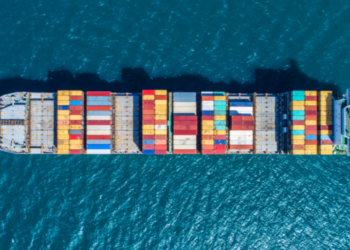Fuel changeover when operating in and out of sulphur emission control areas (SECAs) is a complex and time-sensitive process, explains Mr Ole Skatka Jensen, CEO at Auramarine.
The significantly different properties of HFO and low-sulphur fuels, such as marine gas oil (MGO), pose a number of challenges that have to be successfully overcome to achieve a controlled and safe fuel changeover.
The key is to manage and stabilise fuel viscosity by controlling its temperature; heating or cooling the fuel, which can have temperature difference of up to 100°C in the respective engine injection temperature. To protect the system from thermal shock, it is essential to keep the temperature change rate to a maximum of 2°C/minute. Fuel viscosity and temperature are crucial for engine and fuel-system health:
Too low viscosity can cause injection pressure losses, which in turn may result in difficulties during start and low-load operations. Too low viscosity also reduces the fuel’s effectiveness as a lubricant. This can result in fuel pumps sticking and working ineffectively.
In addition to the engine, also other machinery with moving parts in the fuel-circulation system have minimum viscosity requirements. For these parts, a low viscosity can also cause malfunctions due to lubrication issues.
Interruptions in fuel supply during the changeover process can lead to reduced engine power or in the worst case scenario, total loss of propulsion, which could be hazardous for the vessel, its crew, passengers and cargo.
To summarize, the changeover process requires three critical temperature and viscosity control elements:
- Viscosity must not drop below 2cSt
- Viscosity must not exceed the engine’s maximum limits
- Temperature change rate at the engine inlet must not exceed 2°C/minute 1
A controlled changeover process will assist in preventing such malfunctions, machinery wear and downtime. Furthermore, the complex process should be a simple and safe task for the operator.
Auramarine has over 40 years of experience of fuel supply and handling solutions for marine industry. Based on the input from the market, we saw the need for an automised solution. Each vessel has different specifications, and we find it essential that the fuel changeover system is designed accordingly with the necessary range of features to ensure a safe and reliable changeover process.
Auramarine’s solution is available for newbuildings, upgrades and retrofits. Costs can be saved e.g.by integrating a fuel changeover system to the vessel’s existing fuel supply system. If there is an existing cooler onboard, Auramarine can study each case and check if the system can be updated. If yes, we can work out an upgrade plan and needed parts specification. Also, delivered Auramarine cooling units can be upgraded to meet the demands of modern fuel changeover system.
There is a wide range of options to assist the owner’s operations such as additional non-return, shut off and safety valves, local pressure indicators, data logging, fuel system diagram update service etc.
The system’s value comes in form of safe and controlled processes, that take into account the health of the system’s components and the engine.
The views presented hereabove are only those of the author and not necessarily those of GREEN4SEA and are for information sharing and discussion purposes only.
GREEN4SEA Team met Mr. Jensen during Europort 2017, in early November, to discuss more about fuel changeover challenges.
[divider]
About Ole Skatka Jensen
 Ole Skatka Jensen is Group CEO and responsible for Auramarine Group of companies in addition to being a board member of Auramarine Asia Ltd and Auramarine Hong Kong Ltd. Auramarine was established in 1974 becoming a leading supplier for HFO Supply units, delivered over 13 000 units worldwide, and with own manufacturing in Finland and China. Auramarine’s spare parts are delivered worldwide from its warehouses in Finland and Hong Kong ensuring customer fast and reliable delivery.
Ole Skatka Jensen is Group CEO and responsible for Auramarine Group of companies in addition to being a board member of Auramarine Asia Ltd and Auramarine Hong Kong Ltd. Auramarine was established in 1974 becoming a leading supplier for HFO Supply units, delivered over 13 000 units worldwide, and with own manufacturing in Finland and China. Auramarine’s spare parts are delivered worldwide from its warehouses in Finland and Hong Kong ensuring customer fast and reliable delivery.




























































